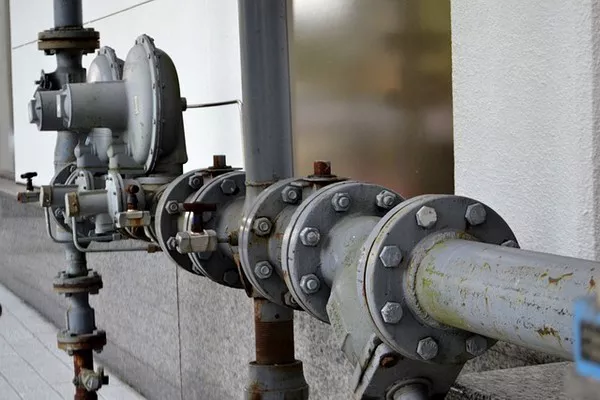In the realm of wastewater treatment, Moving Bed Biofilm Reactor (MBBR) systems have emerged as a highly efficient and versatile technology. They offer significant advantages over traditional treatment methods, providing enhanced performance and flexibility. This article aims to delve into the workings of MBBR sewage treatment plants, exploring their principles, components, benefits, and applications.
Understanding MBBR Technology:
The MBBR sewage treatment process relies on a combination of physical, chemical, and biological mechanisms to remove contaminants from wastewater. At its core, MBBR technology employs a biofilm carrier media where microorganisms attach and grow. These carriers, typically made of plastic materials, provide a large surface area for microbial colonization.
Key Components of MBBR Systems:
Biofilm Carriers: These are the foundational elements of MBBR systems, facilitating the growth of biomass and microbial activity.
Aeration System: Oxygenation is vital for microbial metabolism within the biofilm. Aeration mechanisms ensure optimal oxygen transfer to support biological processes.
Mixing System: Proper mixing promotes even distribution of wastewater and biomass throughout the reactor, enhancing treatment efficiency.
Settling Tanks: These tanks facilitate the separation of treated water from biomass and suspended solids, allowing for further purification.
Operational Principles:
MBBR sewage treatment plants operate through a series of stages, including:
Pre-Treatment: Influent wastewater undergoes preliminary treatment to remove large solids and debris.
Biological Treatment: Wastewater enters the MBBR reactor where it comes into contact with the biofilm carriers.
Microorganisms residing on the carriers metabolize organic matter, converting it into harmless byproducts such as carbon dioxide and water.
Secondary Clarification: Treated water is separated from the biomass through settling tanks or clarifiers.
Disinfection: Optionally, the treated water may undergo disinfection to further reduce microbial pathogens before discharge.
Advantages of MBBR Sewage Treatment:
High Treatment Efficiency: MBBR systems offer superior removal of organic pollutants, suspended solids, and nutrients compared to conventional treatment methods.
Compact Footprint: The modular design of MBBR plants allows for efficient use of space, making them suitable for both urban and rural settings.
Operational Flexibility: MBBR systems can be easily adapted to fluctuating wastewater loads and compositions, ensuring consistent performance.
Low Energy Consumption: The aeration requirements of MBBR reactors are typically lower than those of activated sludge systems, resulting in reduced energy consumption.
Minimal Sludge Production: MBBR processes generate less sludge compared to conventional methods, reducing disposal costs and environmental impact.
Applications of MBBR Technology:
MBBR sewage treatment plants find wide-ranging applications across various industries and sectors, including:
Municipal Wastewater Treatment: MBBR systems are utilized in municipal wastewater treatment facilities to achieve compliance with environmental regulations and produce high-quality effluent for discharge or reuse.
Industrial Wastewater Treatment: Industries such as food and beverage, pharmaceuticals, and petrochemicals employ
MBBR technology to treat diverse wastewater streams containing organic contaminants and nutrients.
Decentralized Wastewater Treatment: MBBR plants serve as decentralized treatment solutions for small communities, remote areas, and temporary installations where centralized infrastructure is impractical.
Case Studies:
Municipal Application: The city of [Name] implemented an MBBR sewage treatment plant to upgrade its aging wastewater treatment infrastructure. The plant achieved significant improvements in effluent quality while reducing energy consumption and operational costs.
Industrial Application: A food processing facility in [Location] installed an MBBR system to treat its wastewater generated during production operations. The plant not only met regulatory requirements but also recovered valuable resources from the treated effluent.
Future Trends and Developments:
The future of MBBR sewage treatment technology is marked by ongoing advancements aimed at enhancing performance, sustainability, and cost-effectiveness. Key trends include:
Integration with Advanced Treatment Processes: MBBR systems are increasingly being combined with membrane filtration, UV disinfection, and other advanced treatment technologies to achieve higher treatment standards.
Focus on Resource Recovery: Efforts are underway to maximize the recovery of energy, nutrients, and water from wastewater treated by MBBR plants, contributing to the circular economy paradigm.
Automation and Control: The adoption of automation and smart control systems enables real-time monitoring and optimization of MBBR operations, improving efficiency and reliability.
Conclusion:
Moving Bed Biofilm Reactor (MBBR) sewage treatment plants represent a cutting-edge approach to wastewater treatment, offering unparalleled efficiency, flexibility, and sustainability. By harnessing the power of biofilm-based processes, MBBR systems play a crucial role in safeguarding public health, protecting the environment, and promoting resource conservation. As technological advancements continue to propel the evolution of MBBR technology, its significance in the field of wastewater management is poised to grow exponentially.

